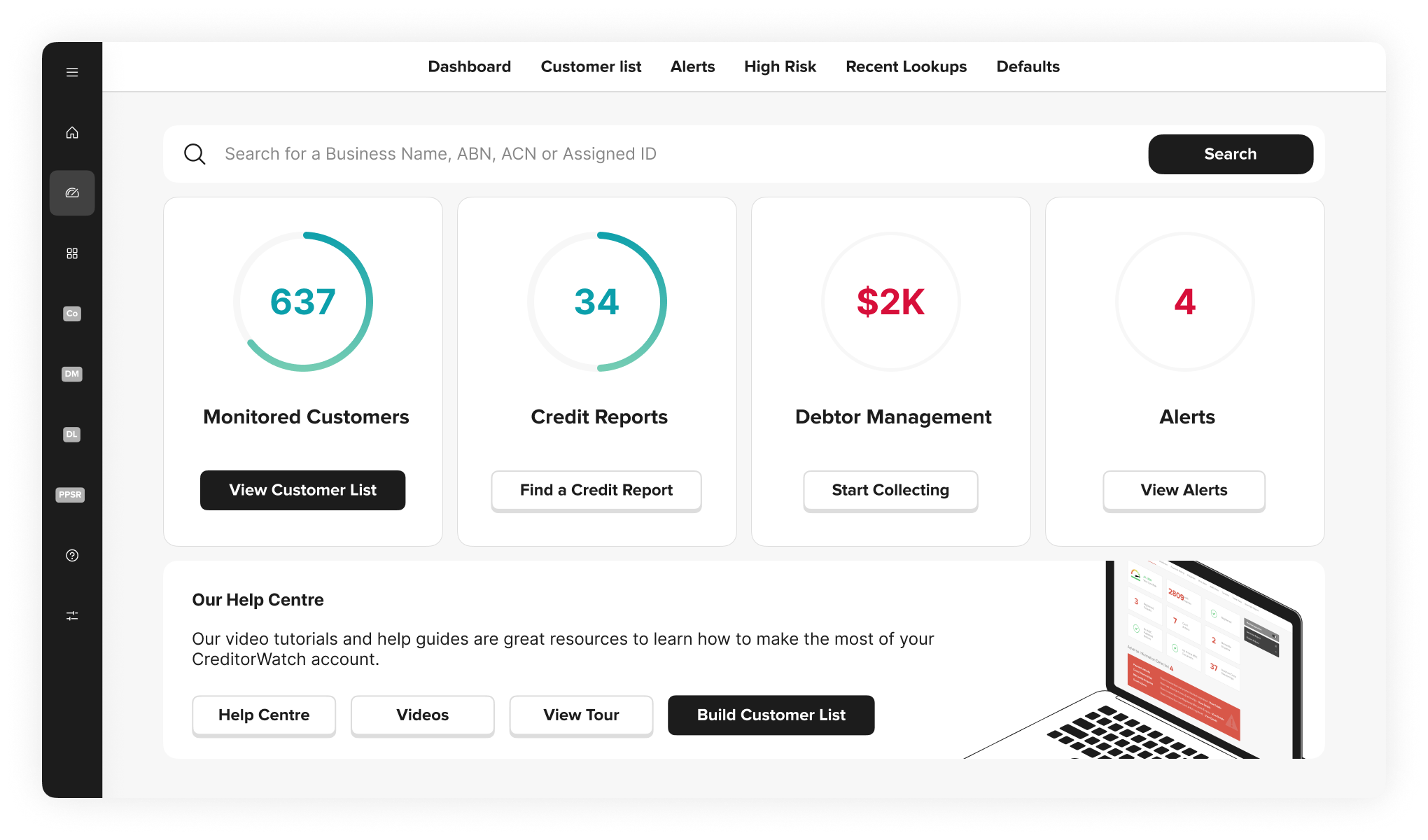In today’s dynamic business environment, customer credit risk is crucial for maintaining smooth cash flow. With rising insolvency rates and the complexities of credit management, businesses must adopt effective strategies to safeguard their financial health and ongoing viability.
Insolvency risk is a significant concern for businesses, especially in today’s constantly changing economic environment. Understanding why and how to assess customers’ financial stability is crucial. Regularly reviewing credit reports and monitoring payment histories can provide valuable insights into potential risks.
For instance, businesses with a trade payment default are 16 times more likely to go insolvent in the next 12 months than those without. By identifying these red flags early, companies can take proactive measures to mitigate risks and protect their financial health.
ATO tax defaults are an important early warning sign of financial distress in a business. Businesses with an ATO tax default are 37 times more likely to go insolvent in the next 12 months than those without. Therefore, companies should be proactive in reviewing customers with tax defaults, as these can significantly impact creditworthiness. Engaging with customers to understand their financial situations can help mitigate risks and develop tailored solutions to address their financial challenges.
Implementing a robust credit application process is essential. Ensuring that all credit applications are thoroughly vetted and that terms and conditions are clear not only protects your business but also fosters trust with customers. A well-defined credit application process helps identify potential risks early, allowing businesses to make informed decisions about extending credit and onboarding new clients.
This proactive approach can prevent financial losses and ensure that only financially stable customers are granted credit. Additionally, clear terms and conditions set expectations for both parties, reducing the likelihood of disputes and fostering a positive business relationship.
Continuous monitoring of customer credit risk is vital for managing your risk exposure. Regular data washes and updates to customer information can help businesses stay informed about any changes in their customers’ financial health. Businesses with a trade payment default are 5 times more likely to close in the next 12 months than those without. This proactive approach can prevent potential losses and enhance decision-making.
Navigating customer credit risk requires proper diligence and strategic planning. By understanding insolvency risks, monitoring ATO tax defaults, and implementing best practices in credit management, businesses can protect their bottom line and foster long-term success.
Want to explore these strategies in more depth? Watch our webinar, ‘How customer credit risk impacts your bottom line’, where our experts unpack the latest data on insolvency risk, ATO tax defaults, and credit management best practices. You’ll hear practical insights and real-world examples to help you strengthen your credit processes and protect your business.

Get started with CreditorWatch today
Take your debtor management to the next level with a 14-day free trial.

